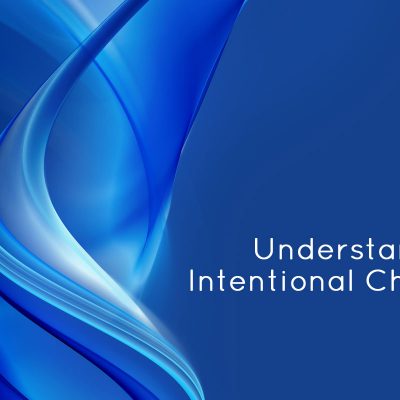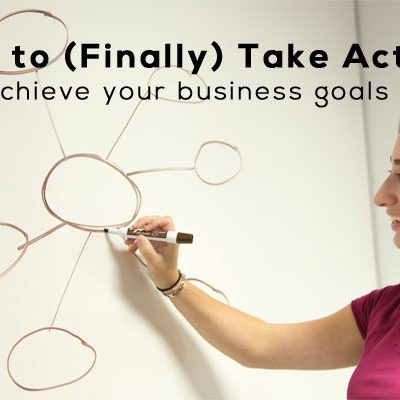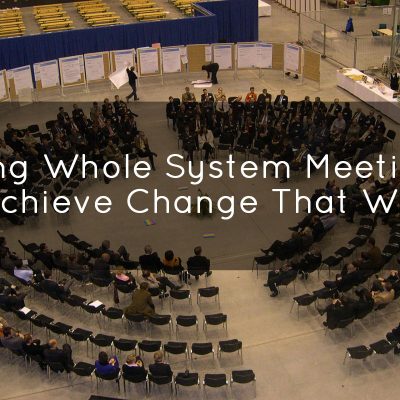
“Where flowers bloom, so does hope.”
--- Lady Bird Johnson
I have always been fascinated by kitchen table wisdom. What I noticed, even as a young child, is that people come home and talk about work at the kitchen table with their families and friends. Frequently, the talk is prefaced by ‘if they would only listen to me’ and finishes out with an idea for improvements, for something better to be in place.
Participatory methods, when used with a people-first focus, help to create those right conditions to take the ideas, knowledge, and wisdom from the kitchen table and into the parts of the organization where it matters most.
Regardless of the approach and methods chosen, the success of a change effort and sustaining the new paradigm depends on the people.
Engaging People Through Hope
Leadership and ownership of the change effort lies within the people who have a stake in successful progress and outcomes. Successfully engaging people in this leadership and ownership is dependent on whether they are fueled by hope or held back by fear.
At the heart of what fuels people is hope. Hope for something better, for something different, and even for more of what is already good. To the extent that people are hopeful for a better future, they are more likely to support the change effort. Because hope fuels people into creating something better, hope needs to be strengthened and nourished.
Opposing hope is fear. Fear may have taken hold for a number of reasons before the change effort is birthed. Fear can be a left-over remnant of challenging or unexpected times in the organization’s history. Fear may have taken hold because people are operating in a performance environment of constant change.
Fear can grow rampant when a change effort is announced in conditions in which fear is already present. When fear is the stronger force, and the important fuel of hope at the heart of the people is in short supply, the change effort is likely to end up in trouble. Fear causes constriction in the belly, tension in the body, and saps energy – in individuals and in the organization.
Hope filled people experience heightened personal energy, creativity, innovation and a sense of expansiveness to more opportunities. They may not be ready to embrace the change effort before developing more of an understanding. Some work will need to be done for that to happen. However, having people fueled by hope is a great source of energy for accomplishing really good outcomes.
Establishing Hope
If you find yourself in a situation where fear is strong and you want to re-inspire people with hope, it is important to take the time required to establish hope. You cannot drive people to shift from fear to hope. This is an ‘inside job’, with each person needing to make the shift via an invitation to do so. The past may have held at least two different kinds of traumas: 1) for individuals in the organization and 2) for the whole organization. Fear may be related to real past circumstances. Sometimes, fear is related to the retelling of stories about the past rather than about real present day circumstances. The fear still feels real.
People benefit from being asked about their hopes and their fears about the intended change effort. They need to feel heard and understood in order to have their feelings validated as important, to move on in letting go of the fear that has taken hold. Asking them about their expectations and concerns regarding an intended change effort is simply not as effective as asking about their hopes and fears. The language of emotions taps into emotional intelligence, allowing for its expression.
Once hopes and fears are expressed, shared, and acknowledged, a step has also been taken for people to feel valued. In feeling valued, hope grows and is strengthened. When people feel heard and understood in the context of the organization itself, which is where the information is most valuable, they don’t need to save their thoughts, feelings, and good ideas for the kitchen table at home where it is unlikely to make a difference in the organization.
Without promising that all of the hopes will be realized, it is possible for people to be encouraged to support the hopes, thereby strengthening hope in their hearts. Depending on the change approach and methods being used, appropriate techniques can be employed to work with the hopes.
Without promising that what is feared won’t happen, it is possible to promise that people in the change effort can pause to address what is happening in relation to their fears. With this acknowledgement and awareness of the possibility of working together when fear is present, the felt sense of the fear begins to lessen, making space for more hope in the individual and the collective. Skillful facilitators and leaders will support people in keeping hope in their hearts and in reducing the impact of fears.
Engaging People in the Change Effort
Hope guides people to believe that an improved future is possible. From that place of hope, people achieve readiness to engage with the change effort. Hope does not guarantee engagement. Getting to engagement is another step in the process.
Participatory approaches and methods attract this engagement. Their use reinforces that people involved in sharing ideas, knowledge and wisdom have value in achieving the best possible progress and outcomes. Participatory methods, carried out in the spirit that successful change is all about the people, nourish hope in the hearts of the people.
People-Driven Processes
This may seem like a subtle difference – people-driven change rather than engaging people in change – but it is a subtle difference with a big impact. As we continue on with change efforts in our current times, it is important to recognize that the power of the individual is growing in our organizations and societies. Social media and instant communication channels support this growing power of the individual. This is pushing those of us who facilitate change efforts to go beyond our work of engaging people in the change effort. We must recognize that change is people-driven and carry out our work accordingly.
Formal leaders are also among the people working on an improved future. They do best if they have the capabilities of flexibility, adaptability, resilience, and basically being open to beneficial outcomes that were not initially anticipated. This requires a leadership capacity for possibility thinking and for handling emergence. The very nature of a change process that makes use of people driven participatory approaches further develops this leadership capacity.
Holding a People-Driven Perspective Goes Beyond Engagement
Holding a ‘people-driven’ perspective when applying participatory approaches and methods, we recognize that we are going beyond engaging the people to participate in the change effort. When we only go as far as engaging people in the change effort, they still experience the process as something passive without a deep connection. It still means “someone else” is taking leadership. A people-driven perspective, however, assumes that people will take active leadership for their part within the change process.
A people-driven perspective means recognizing that they are taking personal and collective leadership in generating ideas, concepts, conversations, relational engagements, and the moving forward of what emerges into recommendations and outcomes. People-driven processes hold to a belief that the people involved in the change process will also be involved in implementing the new, long into the future.
Given enough space for participation, people use their leadership skills and capabilities to move ideas and concepts forward based on feeling passionate about what they are contributing into the conversations. People, out of their desire for something meaningful to happen, want to add value to what is being created. Value that extends beyond the change process itself.
The very nature of a change process that makes use of people driven participatory approaches and methods further develops the skillfulness of the people to be the best version of themselves. People demonstrate their leadership skills. They feel a shared vision for the future. They demonstrate that they communicate well, have conversations that matter, and experience their solution focus during these conversations. People experience the best that comes from relational engagement with one another individually and in groups. Given enough space in participatory meetings, they will demonstrate their ability to self organize in relation to what matters the most to them.
When change is needed, using the most appropriate methods and practices, by making time and space for hope to emerge and creating the change process with a focus on it being people-driven, organizations can best set themselves up for the change processes they engage in to be successful – not just during the process itself, but into the future as that change continues to be implemented.
Photo by Phil Kallahar from Pexels











Leave a Reply
You must be logged in to post a comment.